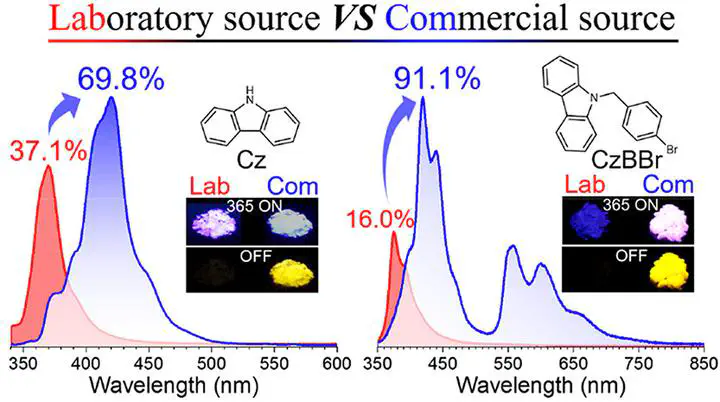
Abstract
Photoluminescence quantum yield (PLQY) is one of the most important characteristics for organic luminescent materials. However, when carbazole prepared from the lab was compared to that from a commercial source, a remarkable change of PLQY was observed to vary from 37.1% to 69.8%. Taking 9-(4-bromobenzyl)-9H-carbazole (CzBBr) as an example of carbazole derivatives, the PLQYs of CzBBr synthesized from different origins of carbazole were varied from 16.0% to 91.1%. Our studies demonstrated that efficient radiative transition pathways were activated for commercial carbazole based luminescence, leading to a large enhancement in PLQY with fluorescence (from 16.0% to 54.4%) and phosphorescence (from <1% to 36.7%) for CzBBr. These results suggest that the origin of carbazole plays a very important role in determining the optical properties of carbazole derivatives, alerting us to carefully revisit carbazole and its derivatives, especially those with record-high efficiency.